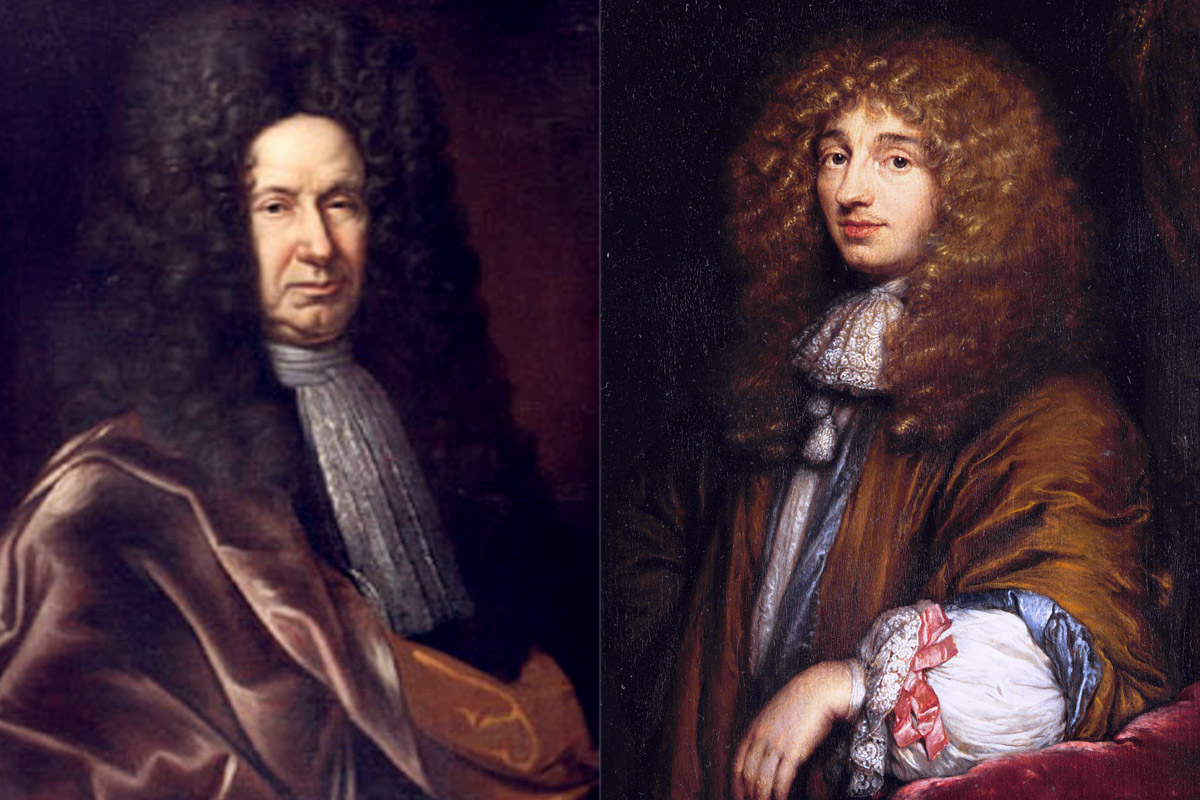Who Were Cassini and Huygens?

NASA's Cassini mission came to a dramatic end last week after two decades in space.
The Cassini orbiter illuminated gigantic storms on Saturn, explored the planet's rings, and revealed potential sources of life in Saturn's moons. The spacecraft deployed the European Space Agency's Huygens probe, which landed on the surface of Saturn's moon Titan in humankind's most distant touchdown to date. The probe beamed back images of Titan's craggy highlands, oily shorelines and steep ravines, lifting the veil on an alien — though in some ways strangely Earth-like — landscape beneath a dense atmosphere. [Cassini's Greatest Hits: Best Photos of Saturn and Its Moons]
Cassini and Huygens forever changed the way scientists understand Saturn and its rings and moons. But the real-life scientists named Cassini and Huygens had a much different view of the planet when they were pushing the boundaries of astronomy in the 17th century.
Turning Saturn's ears into a ring
In 1610, Galileo Galilei became the first person to ever set eyes on Saturn through a telescope. Until then, the planet was little more than a flickering light in the sky. But through his rudimentary instrument, with 30x magnification, Galileo was able to see that Saturn had some kind of appendages or "ears" that stuck out from either side of the planet. They did not move like the moons he had discovered around Jupiter.
Galileo would never quite figure out what these "ears" were.
Enter Christiaan Huygens. Born to a well-heeled family at The Hague in the Netherlands in 1629, Huygens became a leading scientist and mathematician of his era. He invented the pendulum clock. He was the first person to theorize that light travels in waves. And from early on in his career, Huygens devoted himself to designing and perfecting telescopes.
Huygens and his brother came up with a way to mechanically grind and polish telescope lenses for greater clarity. On the night of March 25, 1655, Huygens peered through his new 12-foot telescope and looked at Saturn. At the time, he couldn't resolve Saturn's ears, but he did spot a speck of light next to the planet. Over several nights he watched it travel around Saturn, concluding that it was a moon (which would later be known as Titan, Saturn's largest moon).
Sign up for the Live Science daily newsletter now
Get the world’s most fascinating discoveries delivered straight to your inbox.
Two years later, Huygens was finally able to see that Saturn didn't have ears, but rather was surrounded by a ring. He published a short treatise called "De Saturni luna observatio nova," to formally announce the discovery of Titan and to cryptically call dibs on his explanation for Saturn's ears, which he still needed more time to research. He left a clue in the form of an anagram, which (according to the Smithsonian Libraries), if solved, would have read: "It is surrounded by a thin flat ring, nowhere touching, and inclined to the ecliptic."
More moons, more rings
Huygens believed Saturn had just one solid ring. But his theory was undercut a couple decades later, when Giovanni Domenico Cassini made his own observations of the planet.
Cassini was born in 1625 in northwest Italy. He made his way into astronomy via astrology, and early on in his career, he studied Jupiter and the motions of its moons. Heis sometimes credited for discovering Jupiter's Great Red Spot (a centuries-long storm on the gas giant). And his measurements of the discrepancies in the eclipses of Jupiter's moon Io even helped Danish astronomer Ole Römer calculate the speed of light.
In 1668, King Louis XIV of France invited Cassini to join the new French Academy of Sciences. Cassini helped establish the Paris Observatory and it was there that he set his sights on Saturn. Cassini discovered four more moons around Saturn: Iapetus and Rhea in 1671 and 1672, respectively, and Tethys and Dione in 1684. (Scientists now know that Saturn has 62 moons.) Cassini also noticed that Saturn's ring might not be a single, solid object, and in 1675, he described a gap in the rings, now known as the Cassini division. Cassini even speculated that the rings were not solid, but made up of swarms of tiny moonlets too small to see. He wasn't too far off. According to the European Space Agency, scientists today describe the ring particles as pebbles and dust.
Original article on Live Science.











